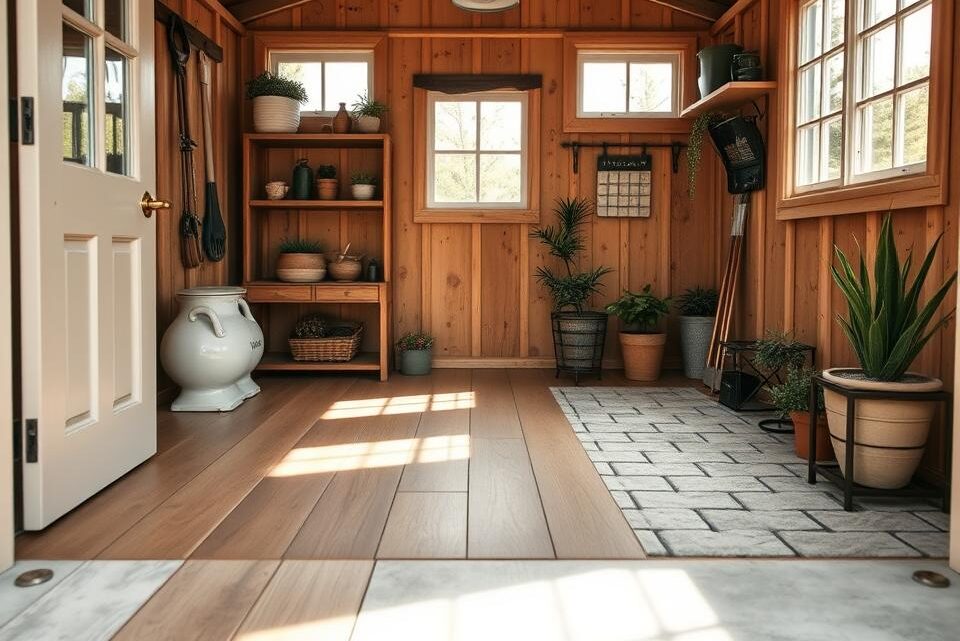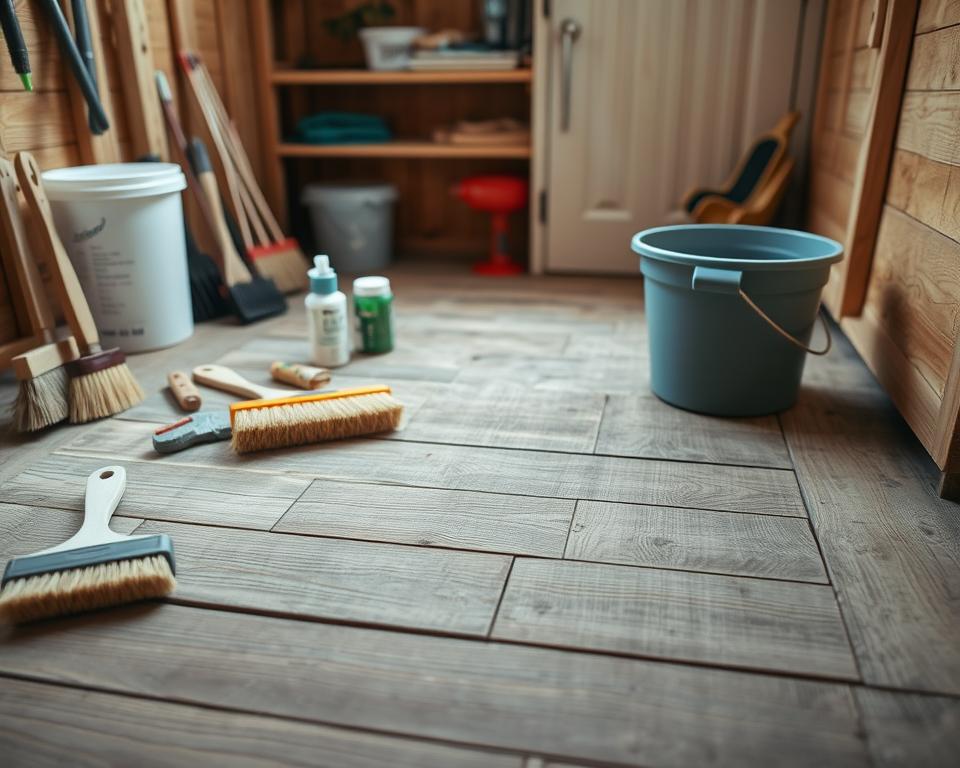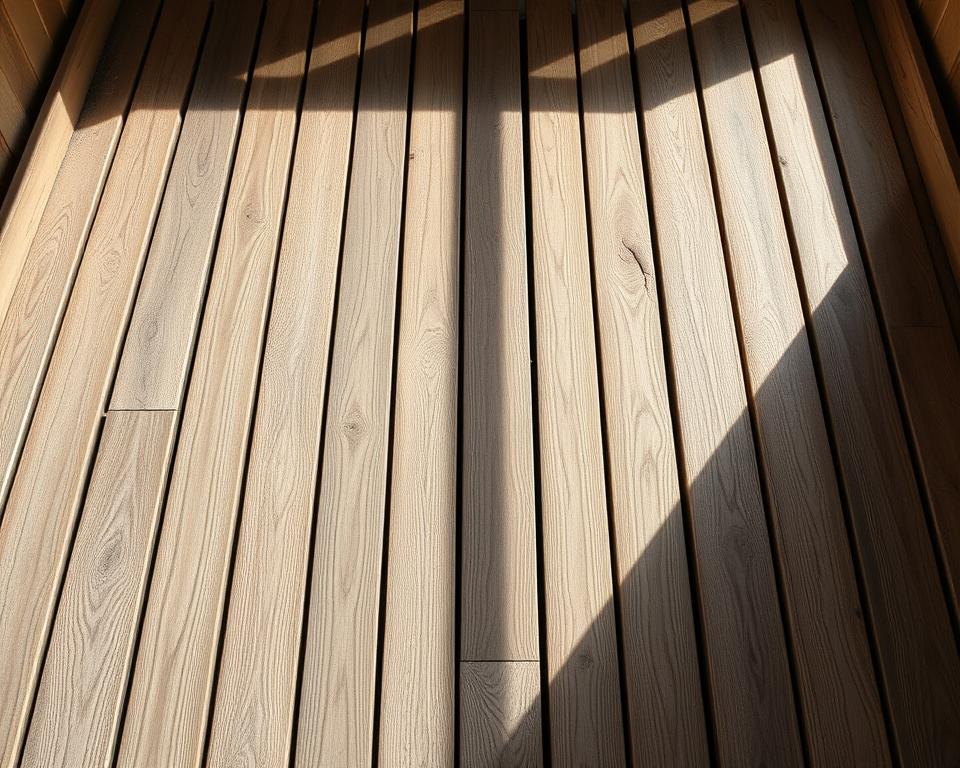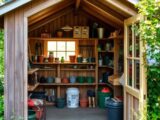Shed Flooring: Best Options for Garden Buildings

Selecting the right shed flooring is crucial for creating a durable and functional garden building. Homeowners across the United Kingdom understand that quality shed flooring can transform a simple storage space into a robust and reliable outdoor structure.
Garden buildings require careful consideration when it comes to flooring. The foundation determines not just the structural integrity but also the longevity of your shed. Whether you’re storing gardening tools, workshop equipment, or creating a peaceful retreat, the right shed flooring makes all the difference.
Investing in high-quality shed flooring protects your valuable items from moisture, provides stability, and ensures your garden building remains a valuable asset for years to come. Understanding the various options available will help you make an informed decision that suits your specific needs.
Inhaltsverzeichnis
Key Takeaways
- Shed flooring impacts overall building durability
- Multiple material options exist for garden buildings
- Moisture protection is critical for longevity
- Proper installation prevents structural issues
- Climate considerations are essential in flooring selection
Understanding the Importance of Quality Shed Flooring
Quality shed flooring forms the critical foundation of any garden building, determining its overall performance, durability, and long-term utility. A well-constructed floor protects your investment and ensures the structural integrity of your garden building for years to come.
Selecting the right flooring involves understanding several key considerations that directly impact garden building longevity and functional performance.
Impact on Garden Building Longevity
The floor of a garden shed acts as a crucial protective barrier against environmental challenges. A robust flooring solution prevents structural degradation by:
- Blocking ground moisture penetration
- Resisting pest infiltration
- Distributing structural weight evenly
- Minimising potential rot and decay
Load-Bearing Requirements
Different garden buildings demand specific load-bearing capabilities. Understanding your shed’s intended use helps select appropriate flooring that can support various weights and activities.
| Shed Usage | Load-Bearing Recommendation |
|---|---|
| Storage | Moderate strength, 150-250 kg/m² |
| Workshop | High strength, 250-400 kg/m² |
| Garden Equipment | Robust support, 200-300 kg/m² |
Moisture Protection Fundamentals
Effective moisture protection is paramount in preventing structural damage. Quality shed flooring integrates multiple layers of defence against damp conditions, including:
- Vapour barriers
- Waterproof membranes
- Elevated floor designs
- Drainage considerations
By prioritising these critical aspects, gardeners can create a resilient foundation that safeguards their valuable garden buildings against environmental challenges.
Essential Factors to Consider Before Choosing Shed Flooring

Selecting the right shed flooring requires careful consideration of multiple crucial factors. When choosing shed flooring, homeowners must evaluate several key aspects to ensure a durable and functional solution for their garden building.
The primary shed flooring factors include:
- Intended usage of the shed
- Climate and environmental conditions
- Budget constraints
- Installation complexity
- Long-term maintenance requirements
Understanding your specific needs is paramount when selecting shed flooring. Different purposes demand unique flooring characteristics. For instance, a workshop might require more robust flooring compared to a storage shed.
“The right shed flooring transforms a simple garden structure into a functional and reliable space.” – Garden Design Experts
Climate plays a significant role in shed flooring factors. British weather presents unique challenges, with frequent moisture and temperature fluctuations. Choosing shed flooring that can withstand these conditions becomes critical for longevity and performance.
Budget considerations should not compromise quality. While cost-effective options exist, investing in high-quality flooring can save substantial maintenance expenses in the long run.
Installation complexity varies across different flooring materials. Some options require professional expertise, while others are suitable for DIY enthusiasts. Carefully assess your skills and available resources before making a final decision.
Types of Shed Flooring Materials
Selecting the right shed flooring materials is crucial for creating a durable and functional garden building. Different flooring options offer unique benefits and challenges for homeowners and garden enthusiasts.

When exploring shed flooring options, gardeners must consider factors like durability, cost, and installation complexity. The primary shed flooring materials include wooden flooring, concrete flooring, and composite flooring.
Wooden Flooring Options
Wooden flooring remains a popular choice for shed bases due to its versatility and aesthetic appeal. Pressure-treated lumber provides excellent resistance against moisture and rot.
- Plywood: Cost-effective and lightweight
- Pressure-treated timber: Enhanced durability
- Tongue-and-groove boards: Seamless installation
Concrete Solutions
Concrete flooring offers unparalleled strength and longevity for garden sheds. Poured concrete slabs create a solid, level surface that withstands heavy loads and harsh weather conditions.
| Concrete Type | Pros | Cons |
|---|---|---|
| Poured Concrete | Maximum durability | Higher installation cost |
| Concrete Pavers | Easy replacement | Potential uneven surface |
Composite Materials
Composite flooring represents a modern solution for shed bases, combining multiple materials to create robust and low-maintenance surfaces.
- Recycled plastic composites: Environmentally friendly
- Fibre-reinforced options: Superior strength
- Modular design: Flexible installation
Each shed flooring material presents unique advantages, so homeowners should evaluate their specific requirements before making a final selection.
Cost Comparison of Different Flooring Solutions
Selecting the right shed flooring involves careful consideration of shed flooring costs and comprehensive flooring solutions comparison. Different materials present unique financial implications for garden building owners.
Budget-conscious homeowners will find several options to suit their needs. Let’s break down the primary flooring solutions comparison:
- Wooden Flooring: Typically ranges from £20-£50 per square metre
- Affordable initial installation
- Regular maintenance required
- Potential long-term replacement costs
- Concrete Flooring: Approximately £75-£120 per square metre
- Higher upfront investment
- Extremely durable
- Minimal maintenance expenses
- Composite Materials: £60-£90 per square metre
- Mid-range pricing
- Resistant to moisture
- Longer lifespan compared to traditional wood
When evaluating shed flooring costs, consider not just initial expenses but long-term value. A slightly pricier option might save money over time through reduced maintenance and replacement needs.
Smart homeowners invest in quality flooring that balances upfront costs with durability and performance.
Each material offers distinct advantages, making your choice dependent on specific requirements, budget constraints, and intended shed usage.
DIY Installation Guide for Shed Flooring
Embarking on a DIY shed flooring installation can seem daunting, but with the right approach and preparation, you can create a sturdy foundation for your garden building. This guide will walk you through the essential steps of DIY shed flooring, ensuring a successful project that will protect your valuable storage space.

Required Tools and Materials for Shed Flooring
Before starting your shed flooring installation, gather these essential flooring tools:
- Measuring tape
- Spirit level
- Circular saw
- Drill and drill bits
- Protective safety gear
Key materials for DIY shed flooring typically include:
- Pressure-treated timber
- Concrete blocks or gravel base
- Waterproof membrane
- Screws and fixings
- Insulation board (optional)
Step-by-Step Installation Process
- Prepare a level ground surface
- Create a solid foundation using concrete blocks or compact gravel
- Install a waterproof membrane
- Lay floor joists at regular intervals
- Secure flooring panels
Common Installation Mistakes to Avoid
When completing your shed flooring installation, watch out for these potential pitfalls:
| Mistake | Consequence | Prevention |
|---|---|---|
| Uneven ground | Structural weakness | Use spirit level, remove bumps |
| Poor moisture protection | Wood rot | Install waterproof membrane |
| Inadequate joist spacing | Weak floor surface | Follow manufacturer guidelines |
Pro tip: Always check local building regulations before starting your DIY shed flooring project to ensure compliance and safety.
Maintenance and Care for Your Shed Floor
Proper shed floor maintenance is crucial for extending the lifespan of your garden building. Regular flooring care prevents damage and keeps your shed in top condition. Understanding the right techniques can save you time and money in the long run.

Different flooring materials require specific maintenance approaches. Here are key strategies for effective shed floor maintenance:
- Clean the floor regularly using appropriate cleaning methods for your specific flooring material
- Inspect the floor quarterly for signs of wear, moisture damage, or structural issues
- Apply protective treatments to prevent moisture penetration
- Address small repairs immediately to prevent larger problems
Wooden floors need extra attention. Treat wooden surfaces with water-resistant sealants annually to protect against moisture and prevent rotting. For concrete floors, check for cracks and apply specialised concrete sealers to maintain structural integrity.
Implementing a consistent flooring care routine will significantly reduce the risk of long-term damage. Simple preventative measures can help maintain your shed floor’s appearance and functionality for years to come.
“A well-maintained floor is the foundation of a durable shed” – Garden Maintenance Experts
Your shed floor’s longevity depends on proactive maintenance. Regular cleaning, timely repairs, and appropriate protective treatments are the keys to preserving your investment.
Weather-Resistant Flooring Solutions for British Climate
Protecting your garden shed from the unpredictable British climate requires careful consideration of weather-resistant flooring. The UK’s unique weather patterns demand specialised flooring solutions that can withstand constant moisture, temperature fluctuations, and potential dampness.

Selecting the right damp-proof flooring is crucial for maintaining the structural integrity of your garden building. Different materials offer varying levels of protection against the challenges posed by the British climate.
Dealing with Dampness
Moisture is a significant concern for shed owners in the UK. Effective damp-proof flooring options include:
- Concrete base with moisture barrier
- Raised wooden platforms
- Rubber-sealed composite materials
- Epoxy-coated surfaces
These solutions create a robust defence against ground moisture, preventing water penetration and potential structural damage to your shed.
Thermal Insulation Options
Insulated shed flooring provides an additional layer of protection against cold and damp conditions. Key thermal insulation strategies include:
- Foam board underlay
- Reflective insulation layers
- Sealed air gaps
- Multi-layered flooring systems
Implementing these weather-resistant flooring techniques ensures your garden building remains dry, warm, and protected throughout the challenging British seasons.
Security Considerations and Integration with Shed Alarm Systems
Protecting your garden shed requires a comprehensive approach to shed security that goes beyond simple locks. The right flooring can play a crucial role in enhancing overall shed alarm and security strategies.
When considering shed security, the flooring serves as the foundation of your protection plan. Different flooring materials offer unique security benefits:
- Concrete floors provide exceptional stability and resistance to break-ins
- Reinforced wooden floors can integrate alarm sensors seamlessly
- Composite materials offer additional strength against potential intruders
Modern shed alarm systems now work closely with flooring security technologies. Wireless sensors can be embedded directly into floor materials, creating an invisible but powerful detection network. Smart flooring solutions can now alert homeowners to any unusual vibrations or pressure changes.
Key security features to consider include:
- Shock sensors integrated into floor materials
- Pressure-sensitive alarm triggers
- Moisture-resistant security components
Investing in robust flooring is the first line of defence for your garden building’s security.
Professionals recommend choosing flooring materials that not only support structural integrity but also complement your existing shed alarm system. The right combination can create a formidable barrier against potential theft or intrusion.
Eco-Friendly and Sustainable Flooring Alternatives
Sustainable flooring has become a critical consideration for environmentally conscious homeowners looking to minimise their ecological footprint. The world of eco-friendly shed flooring offers innovative solutions that balance functionality with environmental responsibility.
Modern shed owners are increasingly turning to recycled flooring materials that provide both durability and environmental benefits. These sustainable options not only reduce waste but also create unique and attractive flooring solutions for garden buildings.
Innovative Recycled Materials
- Reclaimed timber from old buildings
- Recycled plastic composite boards
- Cork flooring from sustainable forest sources
- Rubber flooring made from recycled tyres
Environmental Impact Assessment
When evaluating eco-friendly shed flooring, consider these key environmental factors:
- Carbon footprint of material production
- Renewable resource utilisation
- Longevity and potential for future recycling
- Energy efficiency during manufacturing
Choosing sustainable flooring for your shed represents a meaningful step towards reducing environmental impact. Recycled flooring materials not only provide practical solutions but also contribute to broader conservation efforts.
Conclusion
Choosing the right shed flooring is crucial for creating a durable and functional garden building. The best shed flooring options depend on multiple factors, including your specific needs, budget, and local climate conditions. By carefully evaluating materials, installation techniques, and long-term maintenance requirements, you can make an informed decision that protects your investment.
Sustainability and performance go hand in hand when selecting shed flooring. Whether you prefer wooden solutions, concrete foundations, or innovative composite materials, each option offers unique benefits. Homeowners should prioritise moisture resistance, load-bearing capacity, and overall durability to ensure their garden building remains in top condition for years to come.
Your final choice should balance practicality with environmental considerations. Modern shed flooring technologies provide excellent alternatives that are both eco-friendly and robust. From recycled materials to advanced thermal insulation options, today’s market offers solutions that meet diverse requirements while supporting sustainable practices.
Remember that proper installation and regular maintenance are just as important as the initial flooring selection. By investing time in understanding your specific needs and researching the best shed flooring options, you’ll create a reliable and long-lasting foundation for your garden building that serves you well through changing seasons and varying uses.
FAQ
What is the most durable flooring option for a garden shed?
Concrete is typically the most durable flooring option for garden sheds. It provides excellent load-bearing capacity, moisture resistance, and long-term durability. Concrete floors can withstand heavy equipment, resist moisture, and require minimal maintenance, making them an ideal choice for sheds that need to support significant weight or endure harsh weather conditions.
How much does it cost to install a shed floor?
The cost varies depending on the material and size of your shed. Wooden floors typically range from £50-£200, concrete floors can cost between £100-£500, and composite materials might run £150-£350. Factors like shed size, material quality, and whether you’re doing a DIY installation or hiring professionals will impact the overall expense.
Can I install a shed floor by myself?
Yes, many shed floor installations are DIY-friendly. Wooden and composite floors are particularly suitable for home installation. You’ll need basic tools like a drill, spirit level, measuring tape, and some carpentry skills. However, concrete floors typically require more specialised skills and might be better handled by professionals.
How do I protect my shed floor from moisture in the British climate?
To protect against moisture, consider using water-resistant materials like pressure-treated wood, sealed concrete, or moisture-resistant composite boards. Adding a damp-proof membrane beneath the floor, ensuring proper drainage around the shed, and applying waterproof sealants can significantly reduce moisture-related damage in our typically damp British weather.
Are there eco-friendly flooring options for sheds?
Absolutely! Recycled composite materials offer an environmentally friendly alternative. These can be made from reclaimed wood fibres and recycled plastics. Sustainably sourced timber with eco-friendly treatments is another green option. Some manufacturers now produce flooring materials with low carbon footprints, helping you reduce your environmental impact.
How often should I maintain my shed floor?
Regular maintenance depends on the material. Wooden floors should be inspected and resealed annually, concrete floors might need resealing every 2-3 years, and composite materials typically require minimal maintenance. Always check for signs of moisture, wear, or damage, and address any issues promptly to extend the floor’s lifespan.
Can shed flooring improve security?
Yes, the right flooring can enhance shed security. Solid concrete or thick composite floors make it more difficult for intruders to dig underneath. You can also integrate floor-based alarm sensors that detect movement or tampering. Ensuring a robust, well-installed floor creates an additional barrier against potential break-ins.
What flooring works best for heavy equipment storage?
For heavy equipment storage, concrete floors are the top recommendation. They offer exceptional load-bearing capacity and can support significant weight without warping or breaking. Ensure the concrete is at least 4 inches thick and reinforced with steel mesh for maximum strength and durability.

